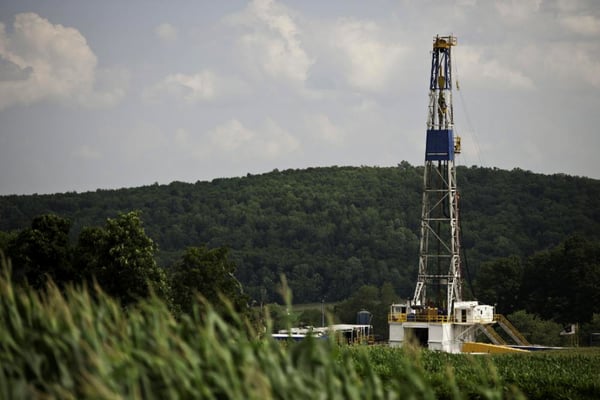We may be near the end of the twelve-year bear market in natural gas. Although we have mostly stayed away from natural gas stocks over the last several years, we continue to follow the market extremely closely. In many respects, natural gas is exactly the type of industry we seek out: the commodity has fallen in price by over 88%, the stocks are incredibly undervalued (often trading near liquidation value), and most analysts and investors have no interest whatsoever. Demand for natural gas is extremely robust, having grown by 30% over the last decade (three times the rate of the previous decade). This growth has been driven by widespread conversion of coal-fire power plants to natural gas in the United States along with increased LNG exports.

The biggest factor keeping us on the sidelines has been supply. In particular, surging production from the Marcellus shale in Pennsylvania along with associated-gas production from oil wells in the Permian Basin have kept the market in a perpetual surplus for most of the past decade despite strong demand. In many regards, North American natural gas has been moving along a knife’s edge – demand has been strong, but supply has been even stronger keeping the market in surplus. If production were ever to falter, a massive bull market in North American gas prices would result.
That moment is arriving and the implications could be profound.
In our third quarter 2019 letter, we explained how our neural network warned us that the Marcellus was far more mature than investors appreciated. Using the neural network, we predicted that half the field’s recoverable reserves will have been produced within 12 months at which point the field would likely peak. The Marcellus has gone from nothing to representing 25% of total US dry gas supply in only 10 years; if the field were to unexpectedly stop growing and decline it would have massive repercussions. When we wrote that essay back October, the Marcellus was still growing robustly, but since then the field has peaked. Production has now declined steadily for the last four months by 1 bcf/d in total or 15% on an annualized basis.
The sudden decline was driven by an abrupt slowdown in drilling activity in the basin. After peaking at 81 rigs in April 2019, the Appalachian rig count (which includes the Marcellus and Utica) is now down 40% to 48 rigs. Our models tell us that this sharp drilling slowdown has brought forward the geological depletion problems that were set to take hold sometime in the next twelve to eighteen months. For example, the last time 50 rigs turned in the Appalachian basins (in mid-2016), basin production was still able to grow by 200 mmcf/d each month. Today, that same rig count can no longer offset base depletion, resulting in monthly production declines of 300 mmcf/d.
As energy prices have plummeted in response to the current pandemic, natural gas companies have slashed their drilling budgets as well. The natural gas-directed rig count today stands at 85 – the lowest reading on record and 95% below the 2008 peak. Marcellus production will not be able to arrest its decline in such an environment and will continue to fall materially as we progress through the year.
At the same time, associated gas production from the Permian is set to collapse. We explained in our introduction how US shale oil production would fall dramatically in response to record-low oil prices. Many shale oil wells, notably in the Permian basin, produce a large volume of natural gas as well. The gas generated as an oil-well byproduct is known as “associated” gas and has represented a huge source of supply. As the oil shales have ramped up production, “associated” gas from the Permian basin alone has gone from zero to 11 bcf/d over the last decade, and Permian basin “associated” gas now represents the second largest gas shale source in the country, despite the field being thought of as an oil shale. Last year, Permian gas production grew by 2.3 bcf/d (nearly the same amount as the Marcellus), highlighting its importance to total US production. Based on announced and expected drilling budgets, our neural network now expects Permian gas production will also contract materially through 2020.
In total, we expect US gas supply will contract by approximately 10 bcf/d over the next 12 months, leaving the market in a dangerous deficit. While natural gas demand has also been impacted by the economic slowdown related to COVID-19, it has not fallen nearly to the same extent as oil demand. Adjusting for weather, we estimate that US natural gas demand has been impacted by COVID -19 ~6 bcf/d or 7%, compared to US oil demand that has fallen 30% over the same period.
Following the recent mild winter, natural gas inventories in the United States currently stand at 2.1 tcf or 20% above the five-year seasonal average. If our models are correct, this will change dramatically as supply falls. We estimate that inventories may only reach 3.2 tcf of gas by the end of October, the lowest reading since 2003 and some 16% less than both last year and the five-year average. At these levels, the market would be very susceptible to a weather-related price spike as we enter the 2020-2021 winter withdrawal season. Even without colder-than-normal weather, our models suggest inventories will hit dangerous levels sometime in late January, leading to higher prices.
North American natural gas has been in a bear market for over a decade during which time the related equities declined in value by over 90%. That bear market is now likely over, and the investment implications and profit potential could be tremendous.
*This blog is an excerpt from our Q1 2020 Market Commentary. All data is as of 3.31.2020.
Would you like to learn more about the Goehring & Rozencwajg investment process? It would be our pleasure to set up a call between you and a portfolio manager on our team. Click below for more information.


